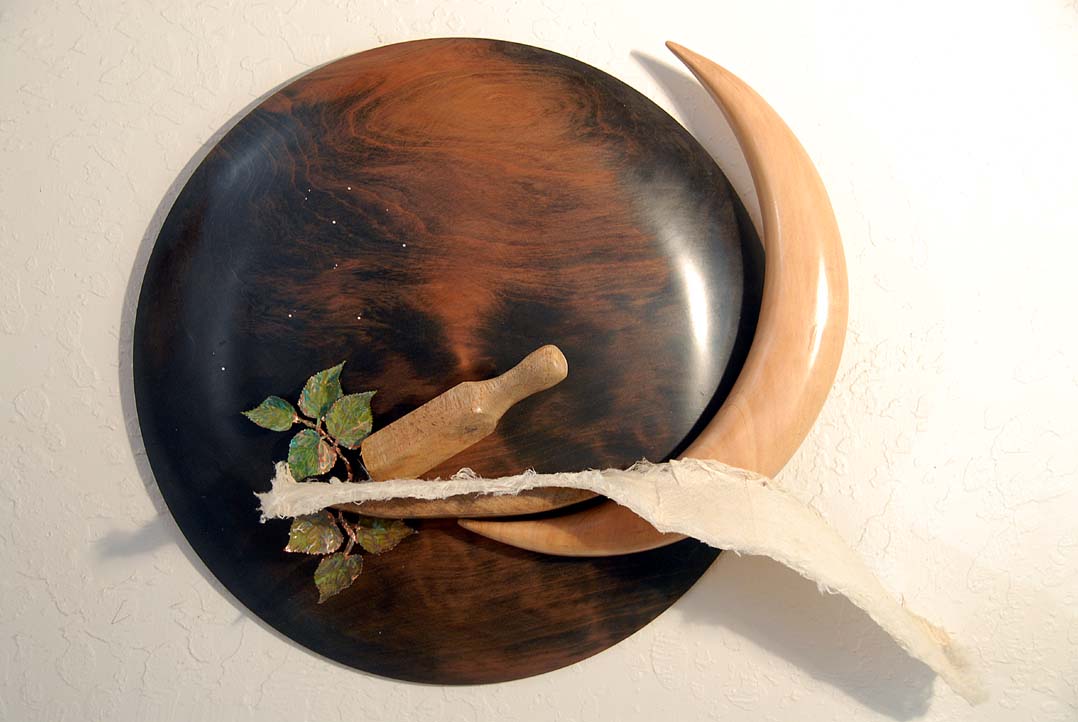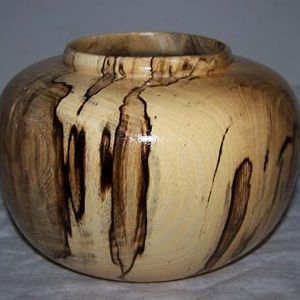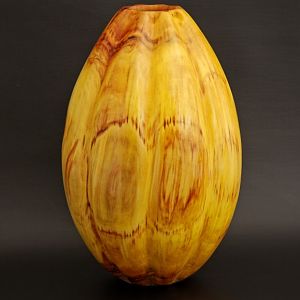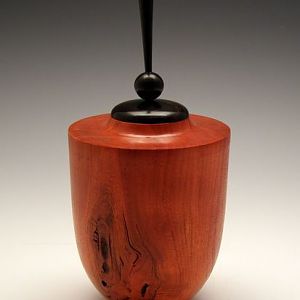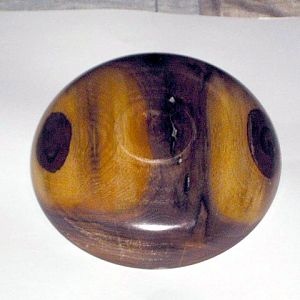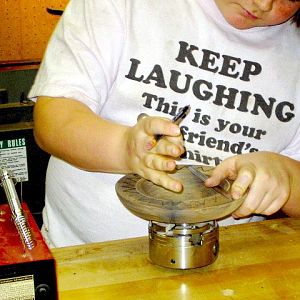OK....this was my 5th and final piece entered in the Big Island Woodturners Show. We normally allow each turner four entries, but this year they wanted to encourage folks to go outside of their comfort zone and allowed a 5th piece if it was wayyyy different than the other 4 pieces. This was my attempt at stepping out of the box.
You are all probably pretty used to my chattiness on the site. Bare with me while I give you the story that this piece depicts.
-----------------------------------------
Hina was an important Goddess and woman to Hawaiians, and known in similar form to all the Pacific Island peoples from Samao to New Zealand to Tahiti. She lived on the banks of the Wailuku River near Rainbow Falls in what is now Hilo, on the Big Island of Hawaii. There she taught Hawaiians how to make fine Tapa cloth by soaking the inner bark of the Wauke or Paper Mulberry Tree until it was soft. She taught them to lay the fibers on the kua or tapa board and join the fibers together by pounding them with a round beater called a hohoa, and thinning and refining the cloth by pounding it with a 4 sided beater called an iekuku.
Hina had trouble drying the finished cloth though because in those early days the Sun raced across the sky too quickly. Her son Maui caught the Sun as it rose above Haleakala on what we now know as the island of Maui and forced it to move more slowly across the skies so his mothers tapa could dry. Maui's battle with the sun gave us the day lengths we all enjoy today.
At one point Hina grew tired of her life on earth and eventually made the difficult climb to the moon and now makes her home there. As she climbed to the moon the stars spilled from the food calabash she carried and settled about her in the heavens.
The ebonized cedar disk represents the dark night skies. Silver inlay depicts the major and minor stars of the constellation Pleiades, or Makalii, one of the many sets of stars that spilled from her calabash during Hinas travels to the moon.
This all forms a backdrop for the crescent moon made of white camphor where Hina lives making tapa. Wauke leaves of verdigris copper adorn the mango kua and iekuku and hand made tapa cloth.
Thanks everyone!
Dave

